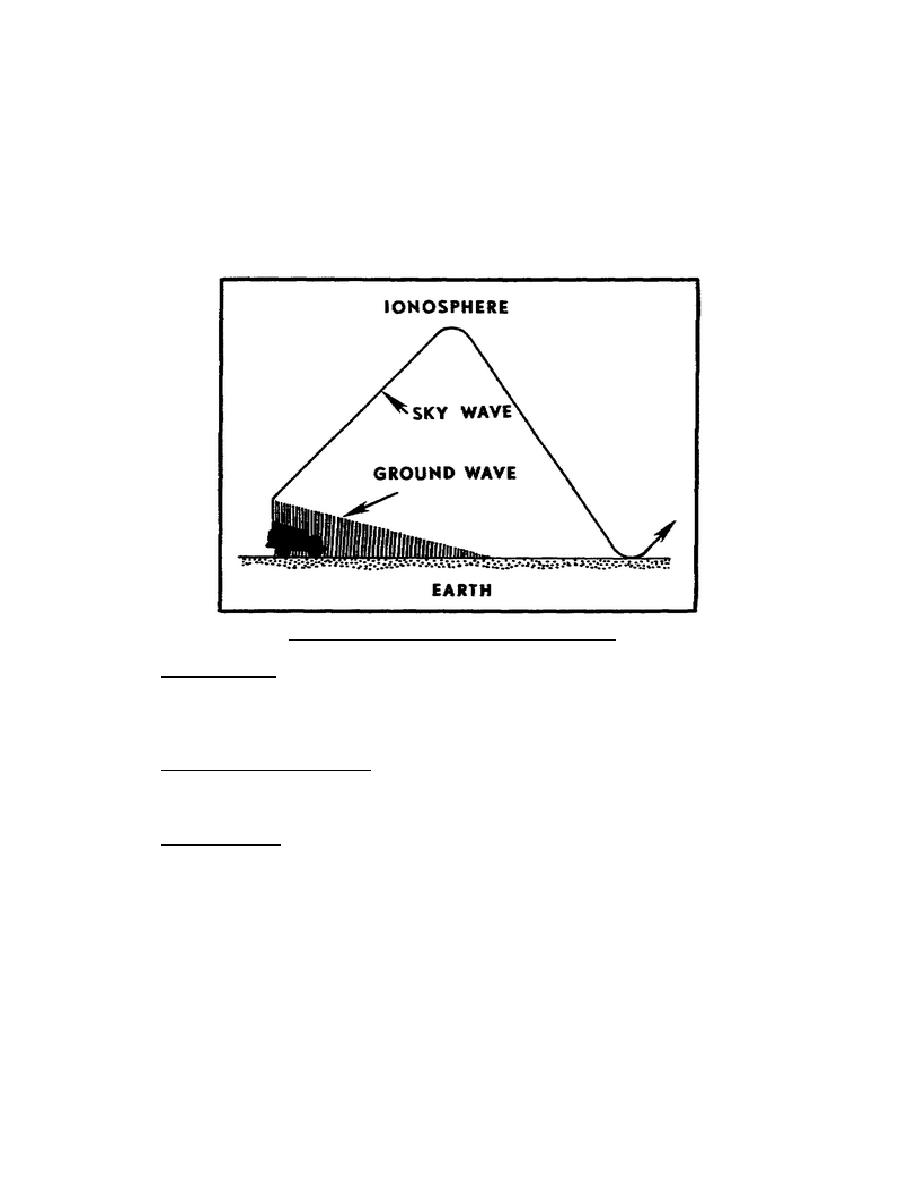
7.
RADIO WAVE PROPAGATION. There are two principal paths by which radio
waves travel from the transmitter to the receiver. One is by ground waves
(Fig 7) which travel directly from the transmitting antenna to the receiving
antenna.
The other is by sky waves (Fig 7), which travel upward to the
ionosphere and are reflected back to the surface of the earth.
Long-
distance radio transmission is achieved principally by the use of sky waves.
The short-distance (8 to 40 kilometers) transmissions of field artillery
radios are generally by ground waves.
The three components of the ground
wave are the direct wave, the surface wave, and the ground-reflected wave.
Figure 7.
Radio wave propagation.
a. Direct wave.
The direct wave (Fig 8) travels directly from the
transmitting antenna to the receiving antenna. This component is limited to
line-of-sight distance.
This distance can be increased by increasing the
height of either the transmitting antenna, the receiving antenna, or both.
b. Ground-reflected wave. The ground-reflected wave is that component
of the surface wave that reaches the receiving antenna after being reflected
from the surface of the earth (Fig 8).
c. Surface wave. The surface wave (Fig 8) follows the curvature of the
earth. This component is affected by the electrical characteristics of the
earth.
11



 Previous Page
Previous Page
